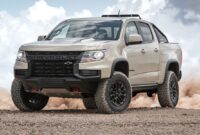Snatch Trucks For Sale: Your Comprehensive Guide to Acquiring the Ultimate Recovery Vehicle sale.truckstrend.com
Introduction: The Power and Precision of the Snatch Truck
In the dynamic world of vehicle recovery, towing, and automotive finance, efficiency and speed are paramount. Enter the "snatch truck," a specialized piece of equipment often referred to as a self-loader wrecker, quick-pick truck, or simply a repo truck. These agile powerhouses are engineered for rapid deployment, designed to quickly and safely lift and transport vehicles, typically in situations requiring swift repossession, impoundment, or roadside assistance.
Snatch Trucks For Sale: Your Comprehensive Guide to Acquiring the Ultimate Recovery Vehicle
Unlike larger flatbeds or heavy-duty wreckers, snatch trucks excel in urban environments and tight spaces, offering unparalleled maneuverability and a "grab-and-go" capability that makes them indispensable for a range of operations. For businesses and individuals looking to enter or expand their footprint in the towing and recovery industry, understanding the market for snatch trucks for sale is crucial. This comprehensive guide will delve into every aspect of acquiring these specialized vehicles, from their core functionality to market navigation, essential features, and critical buying considerations.
What Exactly is a Snatch Truck? Understanding the Mechanics
At its core, a snatch truck is a light-duty wrecker mounted on a commercial truck chassis, typically a 1-ton or 2-ton pickup like a Ford F-Series, Chevrolet Silverado, or Ram. What sets it apart is its integrated wheel-lift system, often combined with a boom, designed for quick and efficient vehicle recovery without the need for the operator to leave the cab in many scenarios.
The "snatch" mechanism involves a hydraulically operated wheel-lift that extends, hooks onto the front or rear wheels of the target vehicle, lifts them off the ground, and secures them for towing. Many modern snatch trucks also feature remote control capabilities, allowing the operator to control the boom and wheel-lift from a safe distance. This design minimizes the time spent on scene, reduces potential confrontation in repossession scenarios, and enhances operator safety. The simplicity and speed of their operation make them ideal for single-vehicle recoveries, parking enforcement, and, most famously, vehicle repossessions where discretion and quick execution are key.
Why Invest in a Snatch Truck? Key Benefits and Applications
The decision to invest in a snatch truck is often driven by a clear understanding of its unique advantages and the specific demands of the recovery market.
- Unmatched Efficiency and Speed: The primary benefit. Snatch trucks are built for quick hook-ups, significantly reducing the time spent on a job. This translates directly to more jobs completed per day and higher profitability.
- Superior Maneuverability: Their relatively compact size compared to flatbeds makes them perfect for navigating congested city streets, parking garages, and tight residential areas where larger vehicles struggle.
- Cost-Effectiveness: For light to medium-duty towing and repossession, snatch trucks typically have lower initial purchase costs, lower operating expenses (fuel, tires), and reduced maintenance compared to their larger counterparts.
- Versatility in Operations: While often associated with repossession, snatch trucks are highly versatile. They are widely used for:
- Light-Duty Towing: Breakdown assistance, vehicle transport for repair shops.
- Parking Enforcement: Removing illegally parked vehicles.
- Roadside Assistance: Quick recovery of disabled vehicles.
- Vehicle Relocation: Moving vehicles within lots or properties.
- Accident Recovery: Handling smaller vehicles involved in minor collisions.

- High Demand for Services: The need for rapid vehicle recovery and repossession services remains consistently high, offering a robust market for snatch truck operators.


Navigating the Market: Where to Find Snatch Trucks For Sale
The market for snatch trucks is robust, offering options for both new and used vehicles. Your choice will depend on your budget, specific needs, and desired features.
- New Snatch Trucks:
- Specialized Dealerships: Manufacturers like Miller Industries (Century, Vulcan, Holmes brands) and Jerr-Dan have extensive dealer networks that specialize in selling new tow trucks, including snatch trucks. These dealers offer customization options, warranties, and often financing.
- Manufacturer Websites: Direct inquiry through the official websites of tow truck body manufacturers.
- Used Snatch Trucks:
- Online Marketplaces: Websites like TruckPaper.com, CommercialTruckTrader.com, eBay Motors, and even Craigslist (with caution) are excellent sources for used snatch trucks. You’ll find a wide range of years, mileage, and configurations.
- Auction Houses: Government surplus auctions (e.g., GovPlanet), general heavy equipment auctions (e.g., Ritchie Bros.), and specialized towing equipment auctions can yield good deals, but often involve "as-is" sales.
- Specialized Brokers & Dealers: Many used truck dealers specialize in tow and recovery vehicles, offering a vetted selection and sometimes limited warranties.
- Private Sellers: Towing companies upgrading their fleet, or individuals exiting the business, may sell directly. This can offer good value but requires diligent inspection.
When considering new versus used, remember that new trucks offer the latest technology, full warranties, and customization, but come with a higher price tag. Used trucks offer significant cost savings and immediate availability but require thorough inspection and carry inherent risks related to wear and tear.
Key Features and Specifications to Look For
When exploring snatch trucks for sale, pay close attention to the following features and specifications to ensure the vehicle meets your operational requirements:
-
Chassis:
- Make & Model: Popular choices include Ford F-450/F-550, Chevy 4500/5500, Ram 4500/5500.
- Engine: Diesel engines (e.g., Power Stroke, Duramax, Cummins) are common for their torque and durability, though gasoline options exist. Consider horsepower and torque for your typical loads.
- Transmission: Automatic transmissions are standard for ease of operation.
- GVWR (Gross Vehicle Weight Rating): Ensure it’s adequate for the types of vehicles you plan to tow.
- Mileage (for Used): Lower mileage is generally better, but regular maintenance records are more crucial.
-
Wrecker Body & Equipment:
- Lift Capacity: This is critical. Look for both wheel-lift capacity (how much it can lift) and boom capacity (how much it can extend and lift from the boom). Capacities typically range from 3,500 lbs to 8,000 lbs for the wheel-lift.
- Winch Capacity: Essential for pulling vehicles onto the wheel-lift or out of ditches. Common capacities are 8,000 lbs to 12,000 lbs.
- Reach: How far the boom/wheel-lift can extend, important for vehicles parked in tight spots.
- Hydraulics: Inspect the hydraulic lines, cylinders, and pump for leaks or damage. This is the heart of the wrecker system.
- Controls: Manual levers, wired remotes, or wireless remotes. Wireless remotes offer greater flexibility and safety.
- Storage: Ample and secure toolboxes for chains, straps, dollies, and other recovery equipment.
- Lighting: Work lights, strobe lights, and warning lights for visibility and safety.
- Tow Dollies: Many snatch trucks carry tow dollies for towing all-wheel-drive vehicles or when the front/rear wheels cannot be lifted.
-
Overall Condition (for Used Trucks):
- Frame & Body: Check for rust, cracks, or damage to the frame, cab, and wrecker body.
- Tires & Brakes: Critical safety components.
- Electrical System: Ensure all lights, controls, and accessories function correctly.
- Fluid Leaks: Inspect for leaks from the engine, transmission, or hydraulic system.
Important Considerations Before Buying
Purchasing a snatch truck is a significant investment. Consider these factors carefully:
- Budget and Financing: Beyond the purchase price, factor in insurance, registration, ongoing maintenance, fuel, and potential loan interest. Explore financing options through dealers, banks, or specialized lenders.
- Legal and Regulatory Compliance: Towing is a heavily regulated industry. Understand the specific licensing, permits, and certifications required in your state and local municipality. This includes DOT regulations, weight limits, and proper load securement rules. Non-compliance can lead to hefty fines and operational shutdowns.
- Maintenance and Parts Availability: Regular preventative maintenance is key to longevity. Research the availability and cost of parts for your chosen chassis and wrecker body manufacturer.
- Training and Safety: Proper operation of a snatch truck requires specialized training. Ensure you or your operators are thoroughly trained in safe towing practices, vehicle securement, and hydraulic system operation. Safety should always be the top priority.
- Intended Use: Will it be primarily for repossession, roadside assistance, or a mix? Your primary use case will dictate the optimal lift capacity, boom reach, and overall setup.
Tips for a Successful Snatch Truck Purchase
- Do Your Homework: Research specific models, read reviews, and understand current market values.
- Thorough Inspection (Especially for Used): Never buy a used snatch truck sight unseen. If possible, hire a qualified mechanic specializing in commercial vehicles to perform a pre-purchase inspection. Check everything: engine, transmission, hydraulics, electrical, frame, and all wrecker functions.
- Test Drive: Take the truck for a test drive, ideally with some weight, to assess its performance, braking, and handling. Test all wrecker functions.
- Review Service Records: For used trucks, request detailed maintenance and repair records. This provides insight into how well the truck has been cared for.
- Negotiate: Don’t be afraid to negotiate the price, especially on used models.
- Understand the Warranty: For new trucks, clarify what the manufacturer and dealer warranties cover. For used trucks, understand if it’s sold "as-is" or with any limited warranty.
Snatch Trucks For Sale: Estimated Price Guide
Please note: Prices are highly variable based on year, mileage, condition, specific features, and market demand. These are general estimates for informational purposes only.
| Type | Year Range | Chassis Brand | Wrecker Body Brand | Wheel-Lift Capacity | Key Features | Estimated Price Range (USD) |
|---|---|---|---|---|---|---|
| New | Current | Ford F-450/550, Chevy 4500/5500, Ram 4500/5500 | Miller (Century, Vulcan), Jerr-Dan | 4,000 – 8,000 lbs | Remote control, LED lighting, toolboxes, warranty, advanced safety features | $75,000 – $150,000+ |
| Used | 2018-2022 | Ford, Chevy, Ram | Miller, Jerr-Dan | 3,500 – 6,000 lbs | Good condition, moderate mileage (50k-150k), standard features | $45,000 – $70,000 |
| Used | 2013-2017 | Ford, Chevy, Ram | Miller, Jerr-Dan | 3,500 – 5,000 lbs | Fair condition, higher mileage (150k-250k), minor wear | $25,000 – $45,000 |
| Used | 2008-2012 | Ford, Chevy, Ram | Various | 3,000 – 4,000 lbs | Older, potentially high mileage (250k+), may require repairs | $15,000 – $25,000 |
Frequently Asked Questions (FAQ) About Snatch Trucks
Q1: What’s the main difference between a snatch truck and a flatbed tow truck?
A1: A snatch truck (or self-loader wrecker) uses a wheel-lift mechanism to quickly lift and tow a vehicle by its wheels, keeping it in contact with the ground. A flatbed tow truck has a hydraulic bed that tilts and slides back, allowing the entire vehicle to be driven or winched onto the flat platform, lifting all four wheels off the ground. Snatch trucks are faster for quick pickups; flatbeds are generally preferred for longer distances, AWD vehicles, or vehicles that cannot roll.
Q2: Can I use a snatch truck for heavy-duty towing?
A2: No. Snatch trucks are designed for light to medium-duty vehicles (cars, light trucks, SUVs). Attempting to tow heavy-duty vehicles (e.g., commercial trucks, buses) with a snatch truck can damage the truck, the towed vehicle, and create dangerous situations. Always match the truck’s capacity to the load.
Q3: What kind of license do I need to operate a snatch truck?
A3: In most jurisdictions in the United States, if the snatch truck’s Gross Vehicle Weight Rating (GVWR) is below 26,001 lbs, a standard Class D (regular driver’s) license is sufficient. However, if the GVWR exceeds 26,000 lbs, or if you are towing a combination of vehicles that exceeds certain weight thresholds, a Commercial Driver’s License (CDL) may be required. Always check your specific state’s Department of Motor Vehicles (DMV) or equivalent agency for exact requirements.
Q4: What are the typical maintenance costs for a snatch truck?
A4: Maintenance costs vary greatly based on usage, age, and condition. Expect regular fluid changes, tire rotations, brake inspections, and hydraulic system checks. Older trucks will likely incur higher repair costs for components like the engine, transmission, or hydraulic pump. Budgeting 10-15% of the truck’s value annually for maintenance and repairs is a reasonable starting point for a used truck.
Q5: Are snatch trucks profitable for a towing business?
A5: Yes, snatch trucks can be very profitable. Their speed and efficiency allow for a higher volume of jobs, especially in the lucrative repossession and roadside assistance sectors. Their lower operating costs compared to larger trucks also contribute to better profit margins for light-duty tasks. Profitability depends on effective management, marketing, and a clear understanding of local market demand and pricing.
Q6: How long do snatch trucks typically last?
A6: With proper maintenance, a snatch truck chassis can last 300,000 to 500,000 miles or more, while the wrecker body itself can last even longer if well-maintained. The hydraulic components are durable but will eventually require rebuilding or replacement. Regular servicing is key to maximizing the lifespan of both the truck and its specialized equipment.
Conclusion: Driving Your Business Forward with a Snatch Truck
Snatch trucks represent a critical asset for anyone involved in the vehicle recovery and towing industry. Their unparalleled speed, maneuverability, and efficiency make them an ideal choice for specific, high-demand tasks, particularly in urban environments and for repossession services. By thoroughly understanding what makes these vehicles unique, where to find them, what features to prioritize, and the crucial considerations for ownership, potential buyers can make an informed decision. Investing in the right snatch truck is not just about acquiring a vehicle; it’s about empowering your operations with a tool that enhances safety, boosts productivity, and ultimately drives your business forward in a competitive market.




